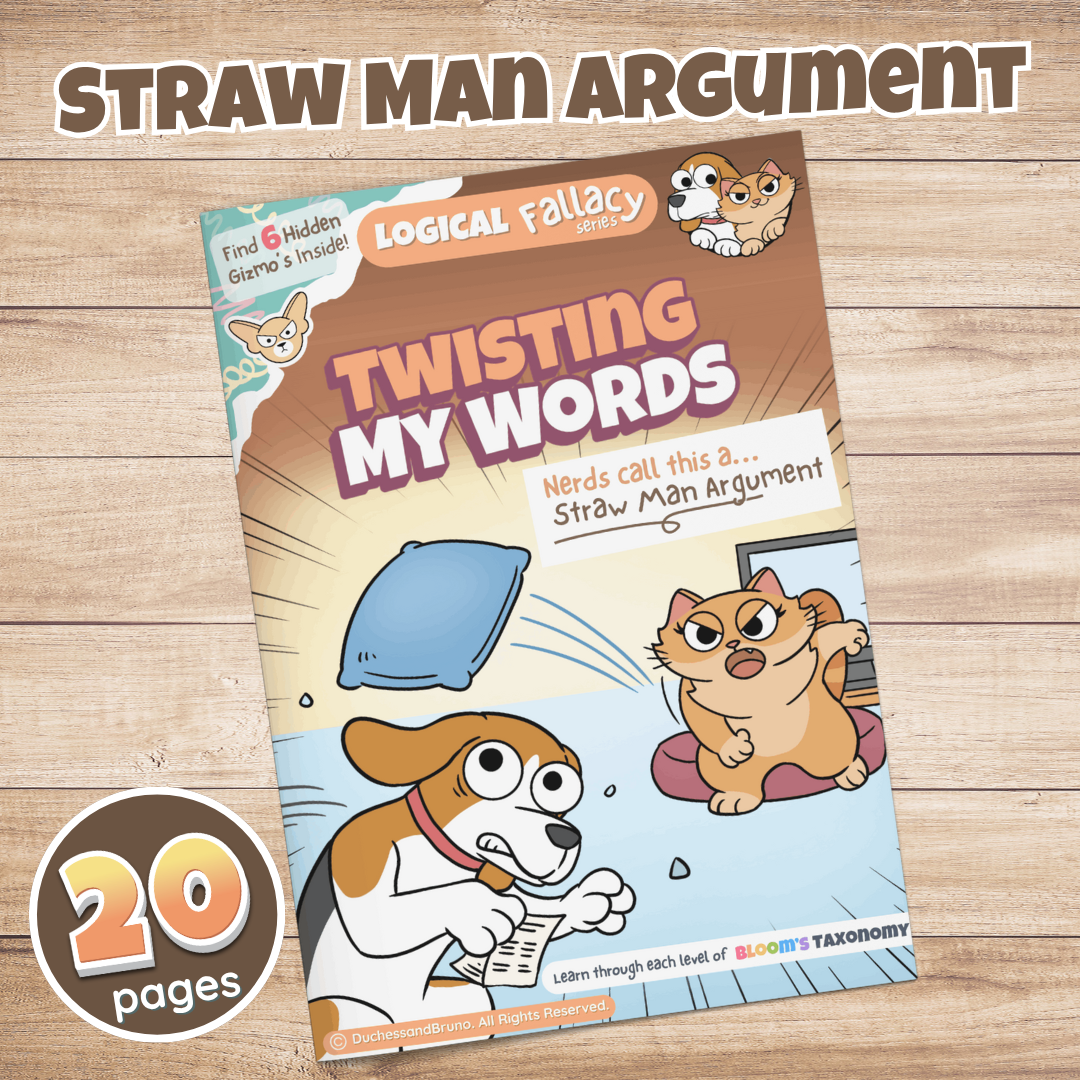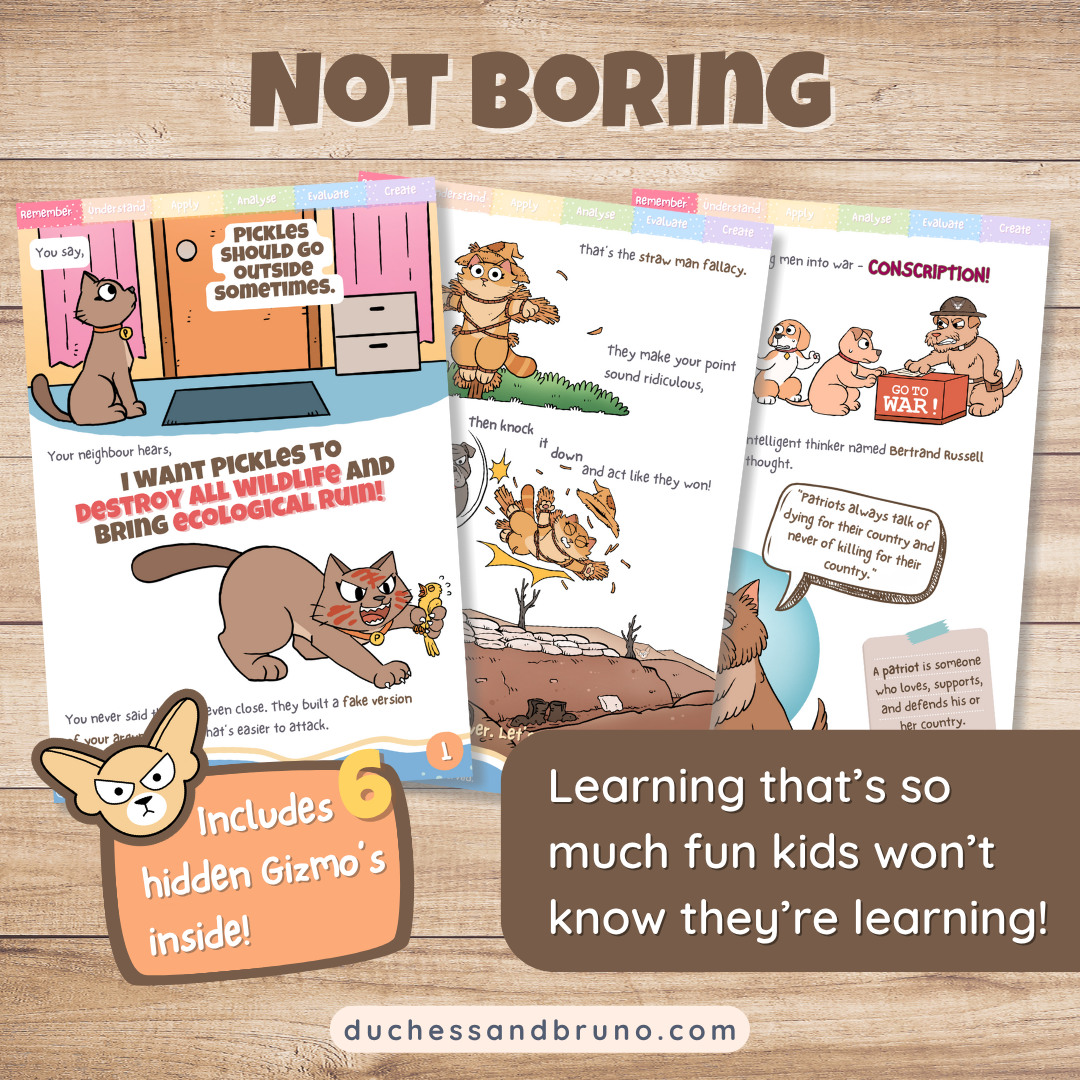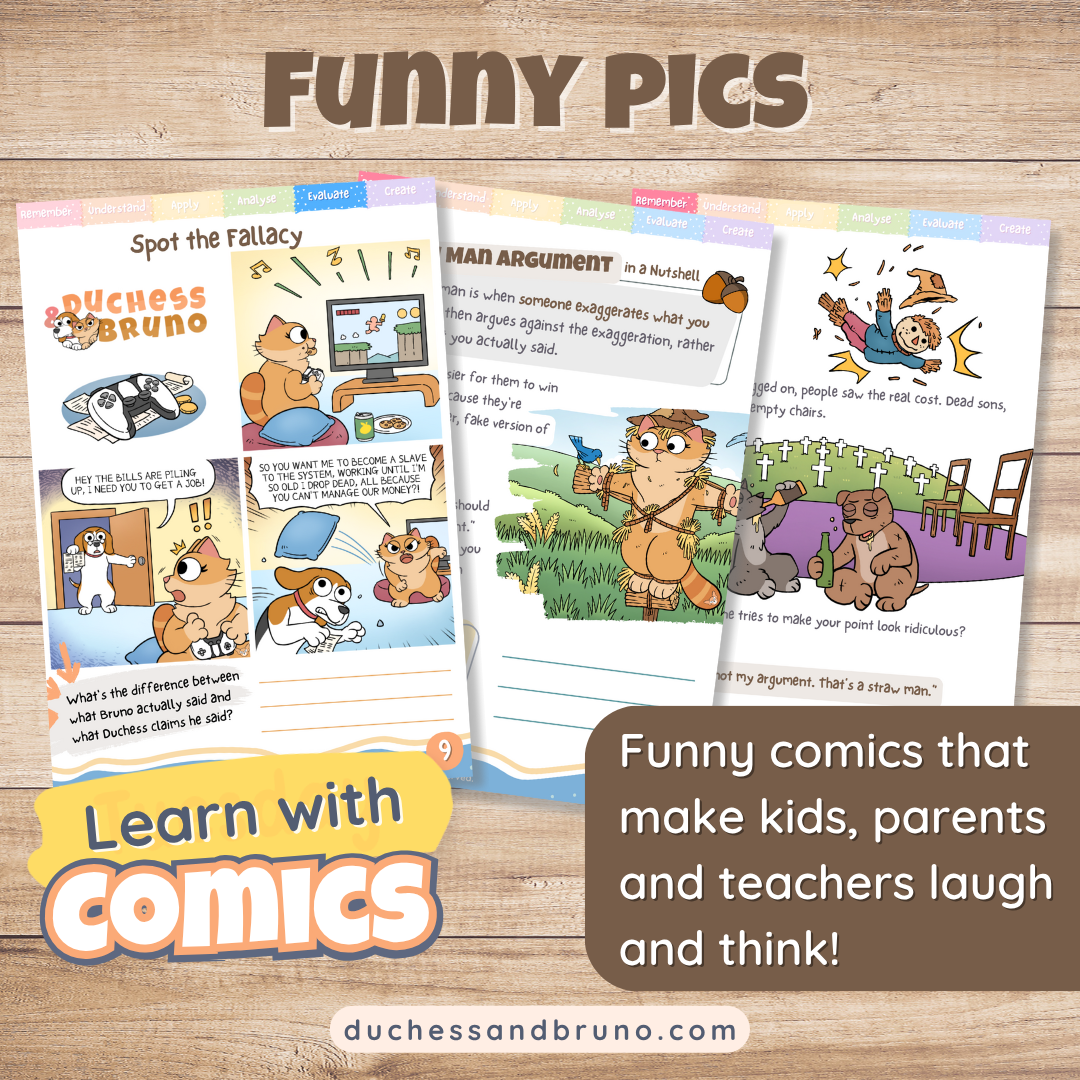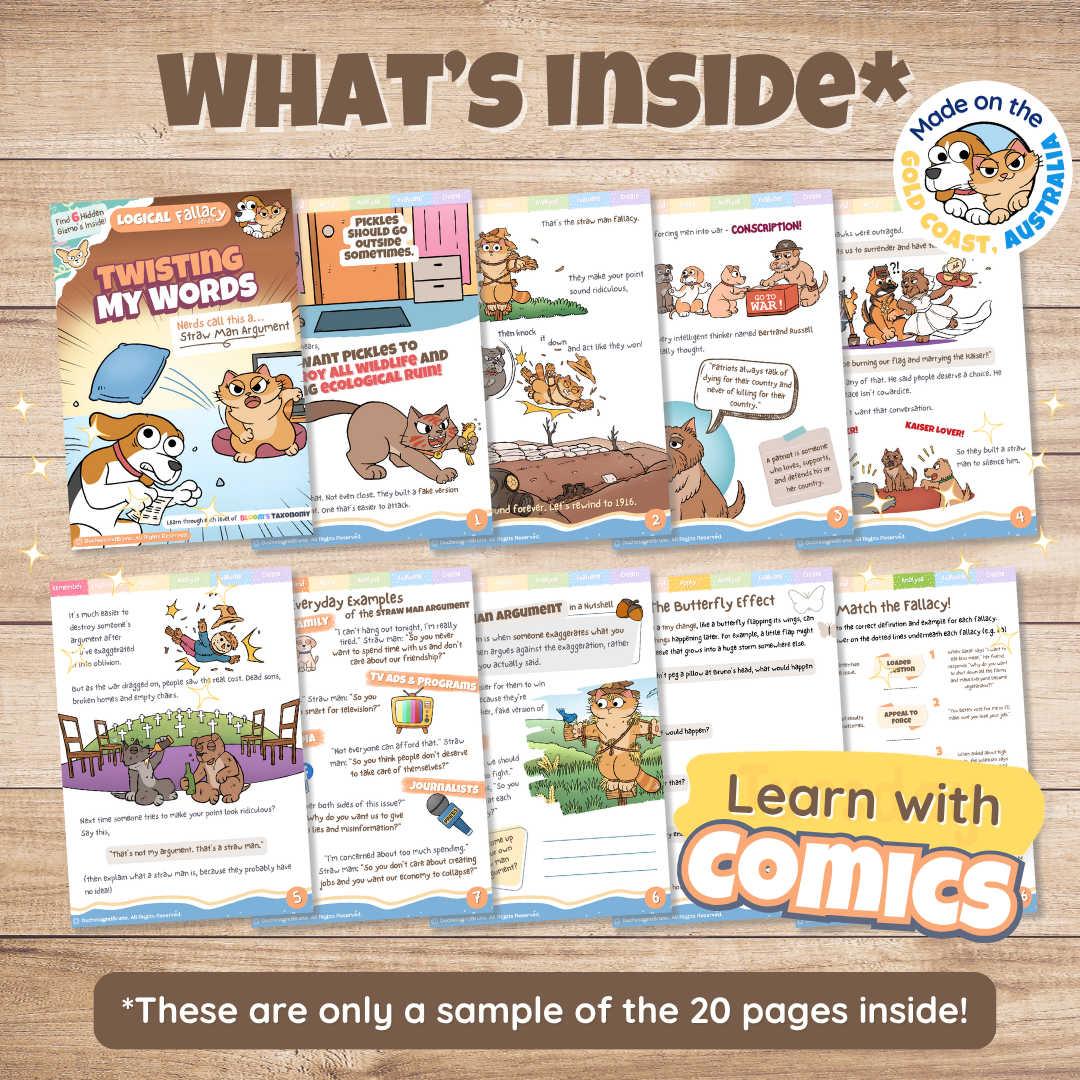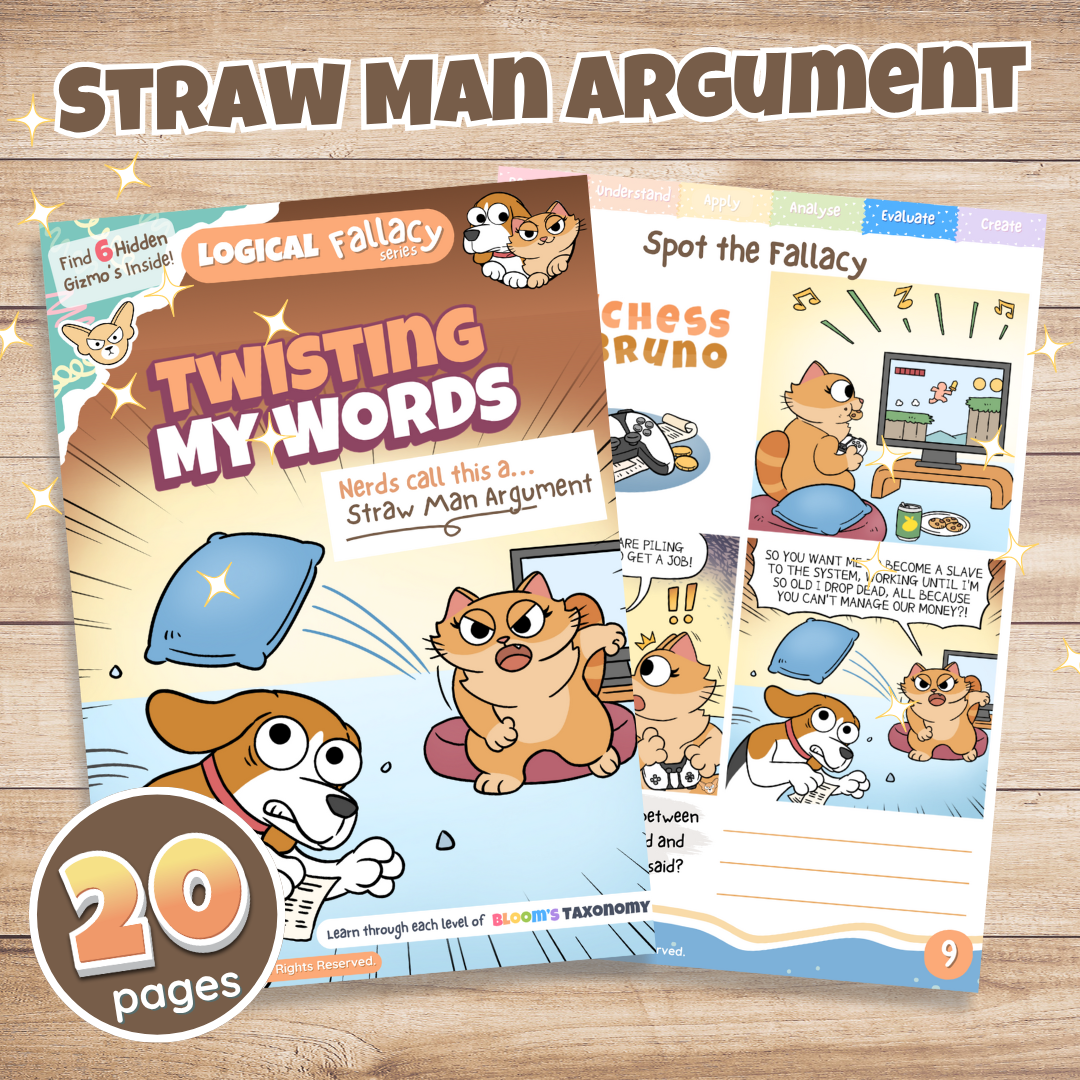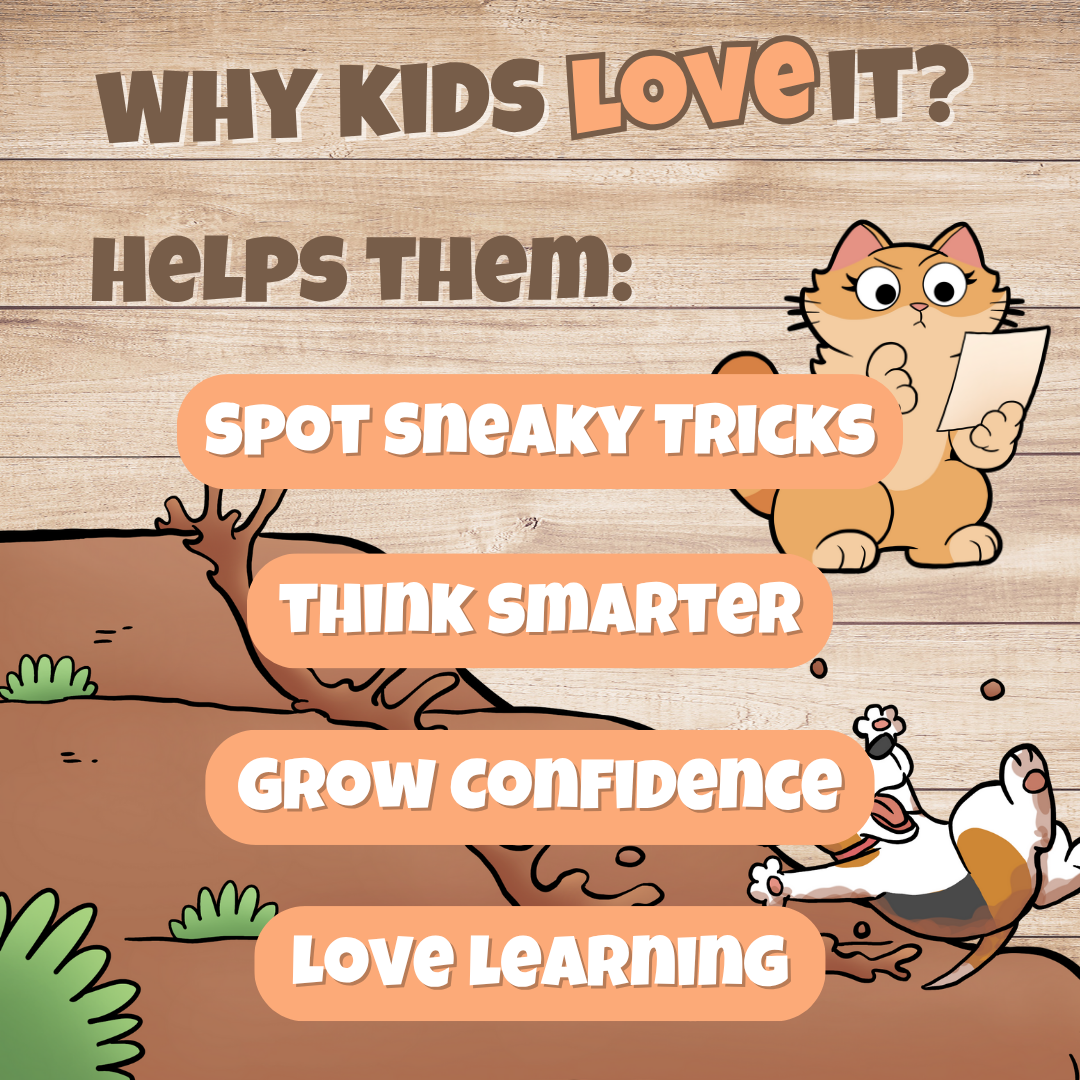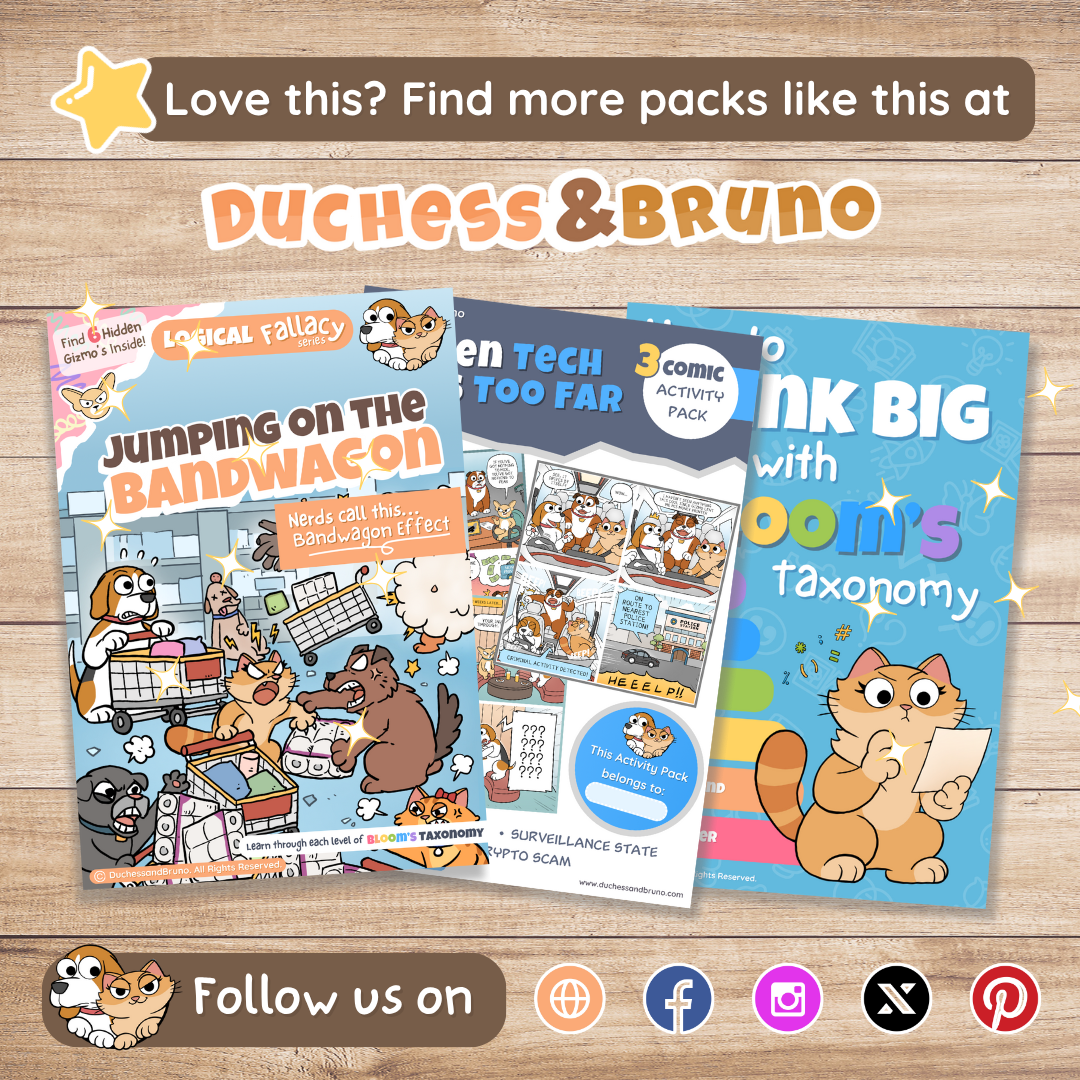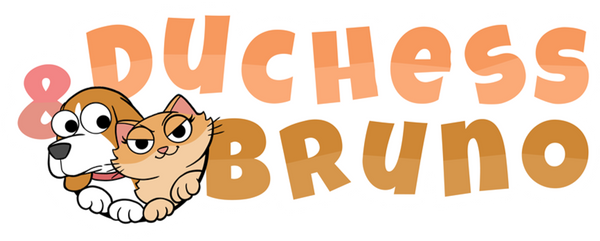Duchess and Bruno
Straw Man Argument Fallacy Activity Pack
Straw Man Argument Fallacy Activity Pack
Couldn't load pickup availability
Get ready to spot sneaky tricks with Duchess and Bruno!
Our 20-page Straw Man Argument Fallacy Pack helps kids think critically, unravel sneaky ideas, and make bold, smart choices. It’s learning that feels like an adventure!
What’s Inside?
- Illustrated Historical Story: A gripping tale that shows the fallacy in action.
- Straw Man Breakdown: Clear definition, examples, and activities to nail it.
- Real-Life Examples: Catch fallacies in conversations, social media, news, and politics.
- Cool Comic + Analysis: A colourful comic with a “Break It Down” section to dive deep.
- Great Word Hunt: Fill in blanks to sharpen skills.
- Fun Challenges: Crack the Code Breaker, play Match the Fallacy, and find Where’s Gizmo!
- Draw Your Own Comic: Create your own fallacy story.
- Answer Sheet: Guides for parents or teachers.
- Plus much much more inside...
Why It’s Awesome:
This pack turns kids into fallacy detectives, blending laughs and smarts to outsmart straw man arguments and misinformation. Perfect for middle schoolers, families, or classrooms!
How to Use It:
Flip through the hardcover booklet for instant fun! Its durable pages are great for classrooms, homeschooling, tutoring, or family nights. Write in it, share it, or display it — ideal for ages 11+ and curious minds of all ages.
Your Feedback Helps:
After using this, share your thoughts with us! Your feedback helps us improve. If anything’s not right, contact us — we’ll make it better.
Important Notes:
We’re Here to Help! If you hit a snag or have suggestions, contact us. We’ll send an updated pack to keep your learning on track!
Just for You: This pack is for personal use only—not for sharing, selling, or commercial use. Join Duchess and Bruno to think sharper and have a blast!
Your Feedback Rocks:
Please share a review after trying it. Your thoughts make our packs better!
Curriculum Alignment:
The following outlines how the Activity Pack meets the standards or outcomes of the Australian National Curriculum, UK National Curriculum, and US Common Core State Standards. Although each of these curricula may not always explicitly mention "critical thinking" or "logical fallacies", they do encourage critical thinking (a core aspect of logical fallacies) in various ways from Grades 6 and above.
Here are the key ways in which critical thinking is emphasised in these national curricula:
Australia (Australian National Curriculum):
In the Australian National Curriculum, critical thinking is encouraged through the development of general capabilities. Some key aspects include:
Critical and Creative Thinking: This capability is explicitly mentioned and emphasises skills such as problem-solving, analysis, and evaluation. Students are expected to think critically and creatively across various subject areas.
Research Skills: Students are encouraged to conduct research, analyze information, and use evidence to support their arguments, which involves critical thinking.
Inquiry-Based Learning: The curriculum promotes inquiry-based learning, where students are expected to ask questions, gather data, and draw conclusions, fostering critical thinking skills.
United Kingdom (UK National Curriculum):
In the UK National Curriculum, critical thinking is promoted through various subjects and general expectations:
English: Students are expected to analyse texts critically, evaluate evidence, and develop persuasive arguments.
Mathematics: Problem-solving and reasoning are central to mathematics. Students are encouraged to think critically and justify their solutions.
Science: The scientific method emphasises critical thinking, analysis of evidence, and drawing conclusions.
History and Geography: Analyzing historical and geographical data and considering multiple perspectives require critical thinking.
Citizenship: Students explore political and social issues, requiring them to think critically about their rights, responsibilities, and societal challenges.
Information Literacy: In an age of information overload, students are expected to critically evaluate information sources for reliability and bias.
United States (Common Core State Standards):
In the US Common Core State Standards, critical thinking is integrated into subject-specific standards and the broader goals for students:
English Language Arts (ELA): Students are expected to analyze texts, evaluate arguments, and develop persuasive writing, requiring critical thinking.
Mathematics: The Standards for Mathematical Practice emphasize problem-solving, reasoning, and critiquing the reasoning of others.
Science: The Next Generation Science Standards (NGSS), adopted by many states, promote scientific inquiry, evidence-based thinking, and argumentation.
Research Skills: Students are encouraged to conduct research, evaluate information, and use evidence to support their claims.
Social Studies: Analyzing historical events, evaluating primary and secondary sources, and considering various perspectives require critical thinking.
These curricula may not explicitly state "critical thinking" as a standalone outcome, but they are designed to foster critical thinking skills within various subjects and educational activities. Educators play a significant role in promoting and assessing critical thinking within their teaching based on their region's curriculum expectations.
Share
